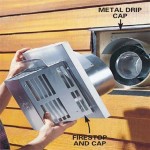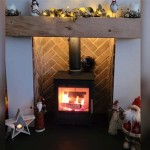Antique Metal Fireplace Inserts: A Timeless Fusion of Function and Art
Antique metal fireplace inserts represent a unique intersection of historical craftsmanship and practical necessity. Once essential for heating homes, these inserts now serve as valuable artifacts, often appreciated for their aesthetic appeal as much as their functional capabilities. Understanding the history, characteristics, and considerations involved in owning and maintaining an antique metal fireplace insert is crucial for collectors, homeowners, and anyone interested in preserving these pieces of history.
Historical Context and Evolution
The development of metal fireplace inserts significantly impacted home heating throughout the 18th and 19th centuries. Initially, open fireplaces, while providing warmth and a focal point, were notoriously inefficient, losing a significant amount of heat up the chimney. Early metal inserts were designed to improve this efficiency by containing the fire within a metal box and radiating heat into the room. These early models were often simple in design, focusing primarily on utility.
As technological advancements progressed and the Industrial Revolution took hold, metalworking techniques improved, leading to more elaborate and ornate fireplace insert designs. Cast iron became a popular material due to its durability and ability to be molded into complex shapes. Decorative elements, such as intricate patterns, neoclassical motifs, and even depictions of historical figures, were incorporated into the inserts, transforming them from purely functional appliances into decorative pieces of furniture.
The proliferation of coal as a fuel source also influenced the design of fireplace inserts. Coal-burning inserts were often designed with specific features, such as grates and ash pans, to accommodate the characteristics of coal combustion. The type of fuel used – wood, coal, or a combination – can often be identified by examining the design of the insert.
By the late 19th and early 20th centuries, central heating systems began to gain popularity, leading to a decline in the reliance on individual fireplace inserts. However, many inserts remained in place, often becoming cherished components of the home's architecture. Today, these antique inserts represent a tangible connection to the past, offering insights into the heating technologies and decorative tastes of previous generations.
Identifying and Evaluating Antique Metal Fireplace Inserts
Determining the age, origin, and value of an antique metal fireplace insert requires careful observation and research. Several key characteristics can help in the identification process.
Material:
The type of metal used is a primary indicator. Cast iron was prevalent from the late 18th century onwards, while earlier inserts may have been made of wrought iron or other less common metals. Examining the metal's surface for signs of oxidation, rust, or corrosion can also provide clues about its age and history.Design and Ornamentation:
The style of the decorative elements is a crucial factor in dating an insert. Neoclassical motifs, popular in the late 18th and early 19th centuries, can be identified by their symmetrical designs, references to classical architecture, and depictions of mythological figures. Victorian-era inserts often feature more elaborate and ornate designs, with intricate patterns, floral motifs, and asymmetrical arrangements. Art Nouveau and Art Deco influences can be identified by their distinctive design elements, such as flowing lines, stylized natural forms, and geometric patterns.Manufacturer's Marks:
Many manufacturers of fireplace inserts stamped their products with identifying marks, such as their name, logo, or patent dates. These marks can provide valuable information about the insert's origin and age. Researching these marks can often lead to more detailed information about the manufacturer and their products.Functionality and Condition:
While many antique inserts are valued for their aesthetic appeal, their functional condition is also important. Examining the insert for cracks, breaks, or missing parts is crucial. Rust and corrosion can compromise the structural integrity of the metal and affect its ability to function safely. The presence of original grates, ash pans, and dampers can also add to the value and historical significance of the insert.Size and Dimensions:
The size of the insert should be considered in relation to the size of the fireplace opening. An insert that is too large or too small will not only look aesthetically awkward but may also be difficult or impossible to install. Measuring the fireplace opening carefully is essential before purchasing or restoring an antique insert.Provenance:
Knowing the history of an antique insert can significantly increase its value and interest. If the insert has been passed down through generations or has a documented history associated with a particular building or family, this can add to its historical significance and desirability.Care and Maintenance of Antique Metal Fireplace Inserts
Preserving an antique metal fireplace insert requires careful attention to its condition and appropriate maintenance practices. Neglecting these practices can lead to deterioration of the metal and loss of historical value.
Cleaning:
Regular cleaning is essential to remove dust, soot, and other debris that can accumulate on the surface of the metal. A soft brush or cloth can be used to gently wipe down the insert. For more stubborn dirt or grime, a mild soap and water solution can be used. Avoid using harsh chemicals or abrasive cleaners, as these can damage the surface of the metal.Rust Prevention:
Rust is a common problem with antique metal fireplace inserts, especially those made of cast iron. To prevent rust, it is important to keep the insert dry and to apply a protective coating of wax or oil. Special metal waxes are available that are designed to protect iron and steel from corrosion. Regularly inspecting the insert for signs of rust and addressing any issues promptly can prevent further damage.Repair and Restoration:
If an antique insert is damaged, it may be necessary to repair or restore it. Minor repairs, such as patching small cracks or replacing missing screws, can often be done relatively easily. However, more extensive repairs, such as welding broken pieces or replacing damaged sections, may require the expertise of a professional metalworker. When restoring an antique insert, it is important to use materials and techniques that are appropriate for its age and construction. Avoid using modern materials or techniques that could detract from its historical integrity.Safety Considerations:
If an antique fireplace insert is intended to be used for heating, it is essential to ensure that it is safe to operate. Have the insert inspected by a qualified professional to check for any structural weaknesses or potential safety hazards. Ensure that the chimney is clean and properly vented to prevent the buildup of dangerous gases. Follow all safety guidelines and recommendations provided by the manufacturer or a qualified professional.Display and Storage:
If an antique fireplace insert is not intended to be used for heating, it can be displayed as a decorative object. Consider placing it in a prominent location where it can be appreciated for its beauty and historical significance. If the insert is not being used or displayed, it should be stored in a dry, protected environment to prevent damage. Wrap the insert in a protective covering to shield it from dust and moisture. Avoid storing it in damp basements or humid attics.The ownership of an antique metal fireplace insert is a commitment to preserving a piece of history. By understanding its historical context, carefully evaluating its condition, and providing proper care and maintenance, owners can ensure that these timeless artifacts continue to be appreciated for generations to come. The blend of artistry and utility embodied in these objects makes them not just valuable collectibles, but also tangible connections to the past.
The inherent value of these inserts extends beyond their monetary worth; they offer a glimpse into the lives, styles, and technologies of bygone eras. They are more than just heating devices; they are historical documents crafted in metal.
Furthermore, the restoration and preservation of antique metal fireplace inserts often contributes to the broader field of historical preservation. The knowledge and skills required to properly care for these objects can be applied to other historical artifacts and contribute to a greater understanding of material culture.
The evolving styles and designs of these inserts also reflect the prevailing artistic movements of their time, making them valuable resources for studying the history of art and design. From the neoclassical elegance of the late 18th century to the ornate details of the Victorian era, each insert tells a story about the aesthetic sensibilities of its period.

Antique Cast Iron Fireplace Insert Pick Up Only Historic House Salvage
Cast Iron Gas Fireplace Insert Antique Victorian Design Amazing Detail

Antique Cast Iron Fireplace Insert Pick Up Only Historic House Salvage

Antique Smith Anthony Cast Iron Fireplace Insert 1270 Auctionnia Com

Vintage Cast Iron Fireplace Insert Grate Basket Accessories Home Decor Lovebirds Rustic Lighting Heavy Black Gold Birds

Antique French Cast Iron Fireplace Insert Surround Decoration With Flowers

All Original And Fully Functional 19th Century Salvaged Chicago Copper Plated Cast Iron Fireplace Mantel Dawson Gas Insert

Antique Fireplace Mantels Inserts Architectural S

Antique Metal Fireplace Box Victorian Fire Place Insert Front Ornate Solid

Antique Cast Iron Gothic Arts Crafts Fireplace Surround Gas Insert 30 5 X 25
Related Posts








